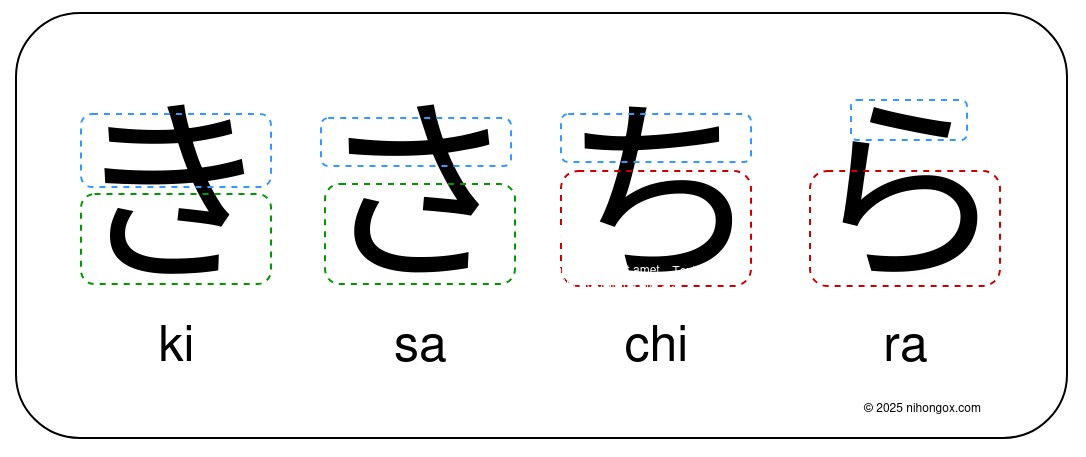Tricky Hiragana: き, さ, ち, and ら
When learning Hiragana, some characters can look really similar. A common point of confusion for beginners is the characters き (ki), さ (sa), ち (chi), and ら (ra).
Why do they look similar?
All these characters have some kind of horizontal line at the top, a slanted vertical line in the middle, and a curve like belly at the bottom.

Now let's look at each individual character and see how each is different from the others.
き (ki)
The Hiragana き (ki) is the easiest to identify from the group. It has two separate horizontal lines at the top. If you are visual, you can imagine a traditional key where the two horizontal lines are the teeth of the key.
さ (sa)
The character さ (sa) is similar to き except that it has only one horizontal line.
For both き and さ, their bellies are flat and faces the left. You can also imagine a curve of a buttock sitting down. Traditionally, they are written separately from the stem with a cut. However, some modern font would display them connected with the stem or the vertical line.
ち (chi)
As for the character ち (chi), it also has one straight horizontal line. Its belly or curve is more bloated and faces the right. As a whole, it looks like the number 5 but with the vertical and horizontal lines intersecting like a cross.
ら (ra)
Finally, the character ら (ra) is very similar to ち, but the top stroke is short, sometimes very short in some writing or font that it looks like a comma or a curved stroke that looks more like a dot. Its horizontal and vertical lines do not cross that makes it also looks like the number 5 but disconnected or broken at the top. Its horizontal line is too short and strokes downward.
In summary, here's how you can easily distinguish them:
- き (ki): Two horizontal lines.
- さ (sa): Like き, but only one horizontal line.
- ち (chi): One horizontal line but looks like a '5'.
- ら (ra): Short and slanted horizontal line, looks like a '5' but broken.
Keep practicing, and you'll be able to tell them apart in no time!
Think you've mastered き, さ, ち, and ら? Test your knowledge with our focused quiz.
Take the Tricky Kana Quiz